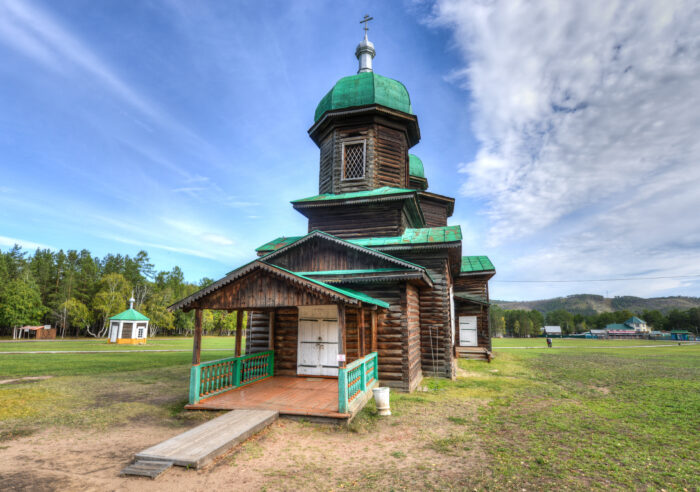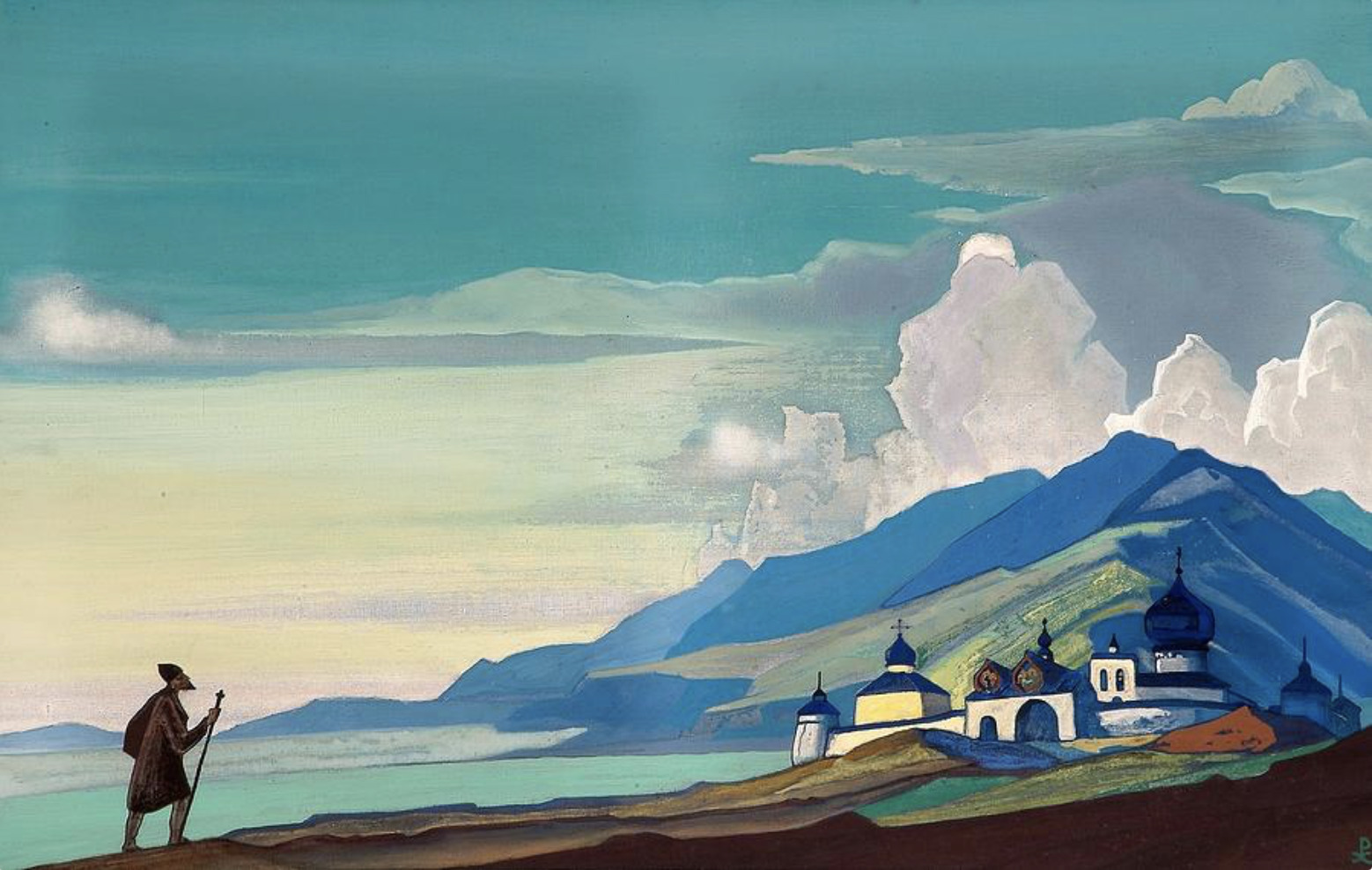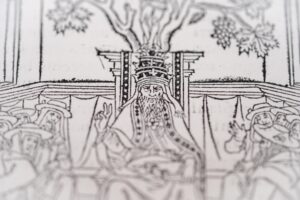Picture a land free of politics and persecution. The working man, no longer under the heavy thumb of diabolical kings, oppressive governments, and unjust nobility, can live in peace and plenty.
Cultures across the globe all have their version of a mythical utopia: the Garden of Eden, Elysium, Shambhala. In the heart of Eurasia, people believed in Belovodye, a paradise on Earth sought by the Russian peasantry, religious figures, and esoteric thinkers since the 1000s.
In Russian folklore, it goes by several names: Belovodye, Oponskoye, Oponia, the Land of Chud. Belovodye means “Land of White Water.” But where did this myth begin?
Oral tradition
In the late 900s, a monk named Sergius traveled from Greece to Kyiv. He met with Prince Vladimir the Great and spoke of a mythical land in the East where there was no war, crime, or injustice. Rivers flowed with milk, their banks made of honey and jelly. There was vast wealth, and peasants were happy and unburdened with work. The Prince, either a man of great faith or extreme gullibility, sent the monk off in search of this utopia. But the monk’s expedition disappeared.
Over 50 years later, a man came to Kyiv claiming to be Sergius. He explained that wild animals, disease, and starvation killed his men but that he survived deep in the mountains of Asia. There, he obtained secret knowledge and did not grow old. Supposedly, the main commandment of this secret place is that every century, six — and only six — people may visit. One of the six must stay behind while the others return home. The man claiming to be Sergius called the place Shambhala.
This story became the basis of a centuries-old struggle by a group of Russian Orthodox Christians fighting to keep their culture and faith alive.

Orthodox chapel at the base of Mount Belukha in the Altai Mountains. Photo: Ivan Rochev/Shutterstock
Russian Orthodox legend
In the 17th century, the Russian Orthodox Church underwent a controversial reform. Patriarch Nikon of Moscow made major changes in rituals and texts to align Russian Orthodoxy with Greek Orthodoxy. He also had close ties with the Russian government, whose power and influence he used to suppress practitioners of the previous rites. The people who adhered to the original rites were called Old Believers.
Old Believers passed down the improbable story of an earthly paradise from generation to generation, replacing the name Shambhala with Belovodye. They said that Belovodye was a refuge for Orthodox Christians to live in peace away from persecution and where they were safe from the spirit of the Antichrist. Belovodye was said to be ruled by a White Tsar at the edge of the flat Earth.
The myth continued into the 18th and 19th centuries. According to writer Georgy Manaev with Russia Beyond, a 19th-century monk from the Topozersky monastery in the city of Arkhangelsk claimed to have visited Belovodye. He said it was founded not by Old Believers but by Assyrian Christians. The monk said that one must be baptized twice to return home and that the city contained over 170 Assyrian churches.
He wrote in his account about “a route by the Chinese realm, requiring 44 days across the Guban, then to the Kingdom of Oponia. There, the inhabitants have a home in the confines of the ocean called Byelovodiye.”
Slavicist and translator Clarence Augustus Manning believed “Guban” might have meant the Gobi desert.
Theosophist perspective
In the 1920s, theosophist Nicholas Roerich and his wife Helena embarked on a five-year expedition through Asia. He searched for Shambhala and also mentions Belovodye in his writings.
“If, despite all the dangers, your spirit is ready…the people of Belovodye will greet you. Should they find that you are worthy, they may even permit you to remain with them,” Roerich wrote.
He claimed that Shambhala and Belovodye are two separate places.
Roerich met with some Old Believers in the Altai Mountains who told him that Belovodye was somewhere among those peaks. However, they said that only those spiritually in tune and full of belief could enter its borders. These stories inspired Roerich to paint his 1933 work, Pilgrim of the Radiant City, our Featured Image above.
Expeditions
The search for Belovodye has been chaotic and full of scams.
Georgy Manaev from Russia Beyond wrote about a peasant who scammed police in 1807, running off with a handsome reward after promising to lead an expedition to Belovodye. A man claiming to be an archbishop from Belovodye also hoodwinked some Old Believers.
In 2015, German travel journalist Jens Muhling journeyed through Russia and heard the Belovodye legend while spending time with a woman named Agafya living in the Taiga. Agafya came from a family of Old Believers who had been oppressed by the Bolsheviks. With their livelihoods taken by the state (their produce was seized and redistributed), her family fled to the Altai Mountains. She told Muhling how her ancestors went searching for Belovodye.
“They knew that true Christians lived in Belovodye. And that there were churches and priests. Even bishops. They wanted to live in Belovodye,” she said.
Her family got into contact with a “bishop” claiming to be from Belovodye, but this was also a scam. The family continued to search along the Arctic Coast, the Chinese border, and the Altai before giving up.
Geographical location?
Perhaps Belovodye was not a specific geographic location. Old Believers were oppressed under the Tsar, the Bolsheviks, and the reformed Orthodox Church. Persecutions, including torture and murder, forced Old Believers to flee to extremely remote areas.
Believers ventured deep into Siberia and the Altai Mountains. Some lived simply but happily. The state caught up to others, annexed their land, and enforced brutal double taxation and other restrictions. So, it could be said that these remote areas represented Belovodye, a temporary utopia, at least for a time.

A Russian Old Believer Church. Photo: Felix Lipov/Shutterstock
Today, people often refer to Mount Belukha, the Bukhtarma, or the Uimon Valley in the Altai as Belovodye. The Uimon Valley certainly featured Old Believer villages. Additionally, the Altai Mountains lie at the intersection of Russia, China, Mongolia, and Kazakhstan, an intersection of cultures and myths.
Legacy
There are only a few hundred thousand Old Believers left. Since the schism, Old Believers have scattered to several countries, including the U.S., Canada, Georgia, Kazakhstan, Estonia, and Australia.
Recently, the Russian government has used Belovodye to try and persuade Old Believers to repopulate Siberia. Siberia’s population is declining. In 2011, the Russian government established special programs for new settlers. Old Believers, used to living in remote areas, began to return to Siberia to revitalize communities.
Conclusion
Going back to the original myth from the 900s, the monk said he visited Shambhala. It is possible that he visited areas in Asia where this myth was alive and popular. Bringing back the myth to Kyiv, it could then have spread to Russia. There, Old Believers could have integrated the myth into their beliefs. Shambhala and Belovodvye share many similarities: They are both mythical utopias of peace, justice, and divinity.
Interestingly, Belovodye is not the only mythical city Old Believers swore existed. They also had their version of Atlantis. Kitzeh was a town that saved itself from a Mongol onslaught by sinking into the sea.






